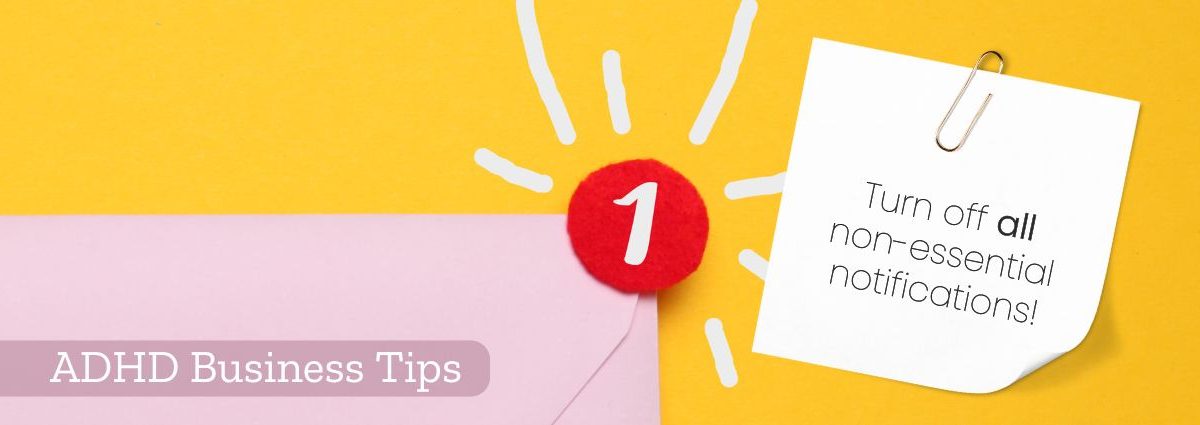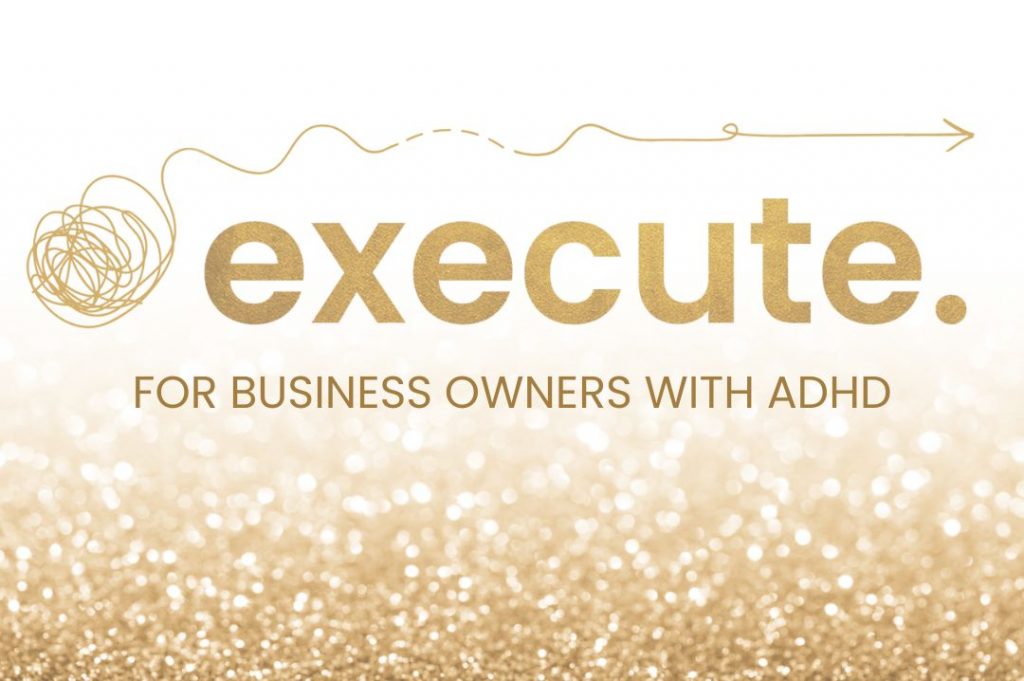In today’s digital age, we’re constantly bombarded with notifications vying for our attention. From email alerts and social media updates to news alerts and app notifications, the incessant pings and buzzes can easily derail our focus and productivity. For a business owner with ADHD, this constant stream of distractions can be particularly challenging to navigate. Having your flow constantly shattered by inconsequential notifications is the antithesis of getting anything meaningful accomplished. By taking control of our digital environment and setting strict boundaries around notifications, we can reclaim our focus and maximise our productivity.
Let’s face it – distractions are everywhere. Whether it’s the ping of a new email arriving in our inbox or the temptation to check social media notifications, these interruptions can quickly pull us away from the task at hand. For me, the turning point came when I stumbled across some sobering statistics about just how much time slips through the cracks because of digital distractions. Some studies have found that employees spend a whopping 2-3 hours per day recovering from distractions and interruptions. Other research estimates that being interrupted by a notification can cause you to lose an average of 23 minutes and 15 seconds of productive focus time.
Do the math, and across a workweek that equates to over 10 hours – more than an entire workday – dissolved into the ether. As a solo operator that kind of lost productivity could be the difference between success and total failure.
Why is it so hard to switch off?
It’s not uncommon to feel some reluctance to the idea of turning off notifications and there are a few reasons why it might be harder for an ADHD brain including:
Fear of Missing Out (FOMO)
Constantly being connected and receiving notifications can create a fear of missing out on important updates, opportunities, or interactions. This fear can drive us to keep notifications on to stay informed and feel connected.
Desire for instant gratification
Notifications provide immediate feedback and gratification, which can be particularly appealing for folks with ADHD who might crave instant rewards and stimulation. Turning off notifications may deprive us of this instant feedback loop, leading to feelings of discomfort or anxiety.
Difficulty with delayed gratification
ADHDers often struggle with delayed gratification and can find it challenging to resist the urge to check notifications as they come in. The anticipation of receiving new notifications and the desire for immediate stimulation can make it difficult to turn off notifications.
Fear of missing important information
Business owners may worry that by turning off notifications, they will miss critical updates, messages, or opportunities that could impact their business. This fear of missing important information may lead you to keep notifications on, even if they contribute to distractions.
Habitual behaviour
Constantly checking notifications may become a habitual behaviour for many of us with ADHD, making it difficult to break the cycle. The repetitive nature of checking notifications can create a sense of comfort and familiarity, reinforcing the behaviour and making it challenging to change.
Perceived productivity
We might mistakenly believe that staying connected and receiving notifications at all times increases our productivity. We can equate responsiveness and availability with effectiveness, leading us to keep notifications on as a way to demonstrate commitment to our work.
Recognising these underlying reasons can help us to better understand our relationship with notifications and make informed decisions about managing them effectively. We also need to recognise that it is possible to stay connected and up-to-date without notifications creating distraction and overwhelm.
This is where the power of turning off non-essential notifications comes into play. By minimising the near-constant barrage of distractions, we can create a more conducive environment for deep work and concentration. Instead of constantly shifting attention from one task to another, you can devote your full focus to the task at hand, making it easier to actually get stuff done.
By turning off non-essential notifications, we can experience a range of benefits, such as:
Enhanced focus & concentration
With fewer distractions vying for your attention, you can devote more time and energy to your most important tasks, leading to deeper focus and increased productivity.
Reduced stress & overwhelm
Constant notifications can contribute to feelings of stress and overwhelm, making it difficult to stay calm and focused. By minimising distractions, you can create a more peaceful and manageable work environment and with fewer notifications to wade through you’re much less likely to miss the really important things.
Improved time management
Without the constant interruptions of non-essential notifications, you can better prioritise your time and allocate your resources more effectively, leading to improved time management and task completion.
Increased creativity & innovation
Distraction-free work environments provide the space and freedom to tap into your creativity and explore new ideas without interruption, fostering innovation and problem-solving.
But where do we start ?
Setting strict boundaries around digital notifications is key to successfully managing distractions. Start by identifying which notifications are truly essential and which ones can be turned off. For example, you might decide that phone calls from important clients or urgent business communications warrant immediate attention, while incoming email and push notifications from social media and other apps can be safely ignored during focused work periods.
Once you’ve identified the non-essential notifications, take proactive steps to disable or mute them. Most devices and applications offer settings that allow you to customise your notification preferences, giving you the flexibility to silence distractions while still receiving important updates when necessary. Consider making use of dedicated “notification-free” blocks of time during your workday to minimise interruptions and maximise productivity. Both Apple and Android devices allow users to set up various focus modes to restrict notifications but ensure you don’t miss anything urgent.
Of course, setting boundaries around notifications is easier said than done, especially for entrepreneurs with ADHD who may be more susceptible to impulsivity and distraction. It may take time to adjust to the newfound silence and resist the urge to constantly check for updates. With some practice and perseverance though you’ll soon find that the benefits far outweigh the initial discomfort.
TRY IT OUT:
Head into your settings right now and switch off any notifications that you know you can easily live without. Unless you’re already pretty disciplined with this kind of stuff chances are you’ll find at least a few non-essentials you can say good riddance to!
While you’re at it, turn off your email notifications if you haven’t already. 💪
Turning off non-essential notifications might be a little confronting at first but it can also be a game-changer for entrepreneurs with ADHD looking to boost productivity and focus. By taking control of your digital environment and setting strict boundaries around distractions, you can set yourself up for success, creating a conducive workspace that supports deep work and concentration. While it may take some time to adjust to the newfound silence, the benefits – including enhanced focus, reduced stress, improved time management, and increased creativity – make it well worth the effort. So go ahead, silence those notifications and reclaim your focus – your frazzled brain will thank you!
What’s your current “notification situation”?
I’ll see you next week!




Recent Comments